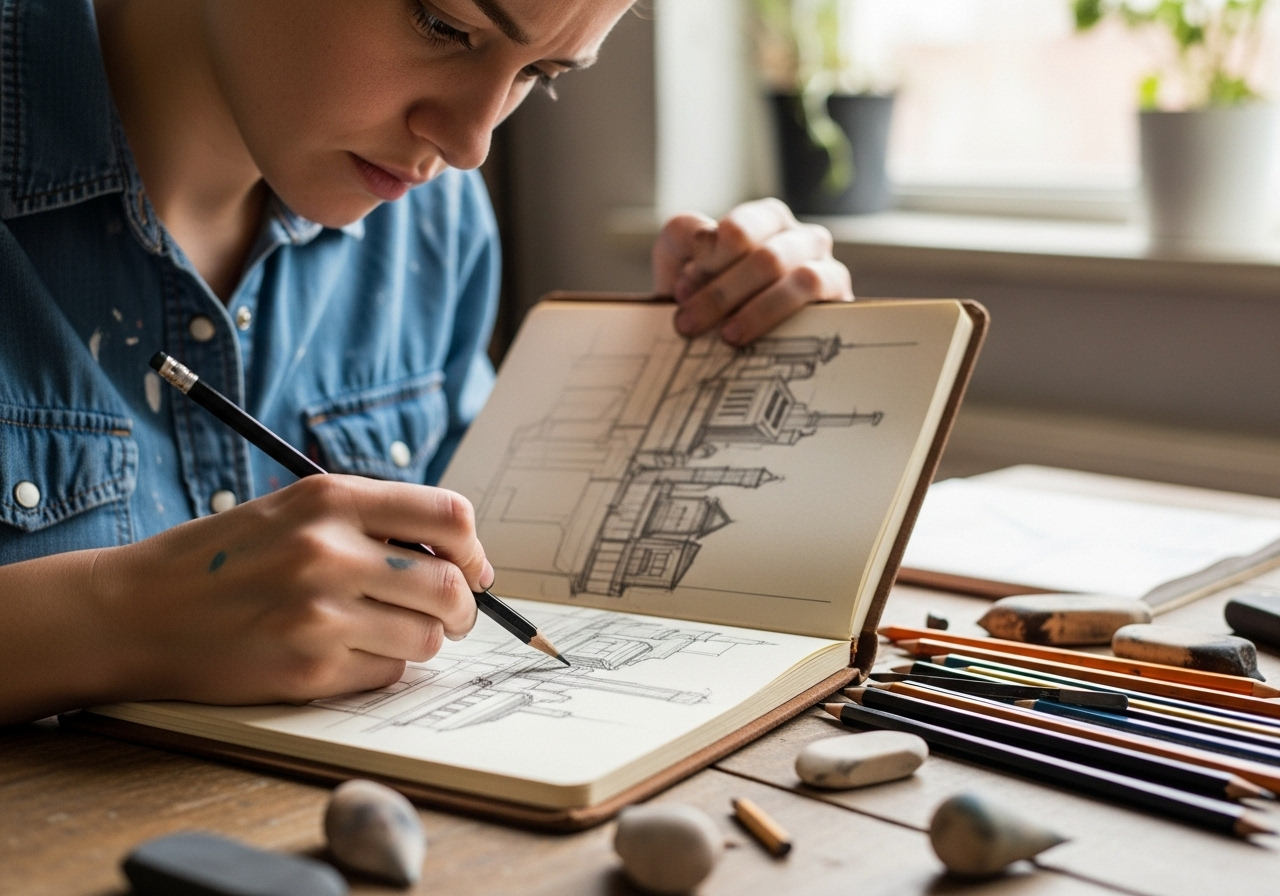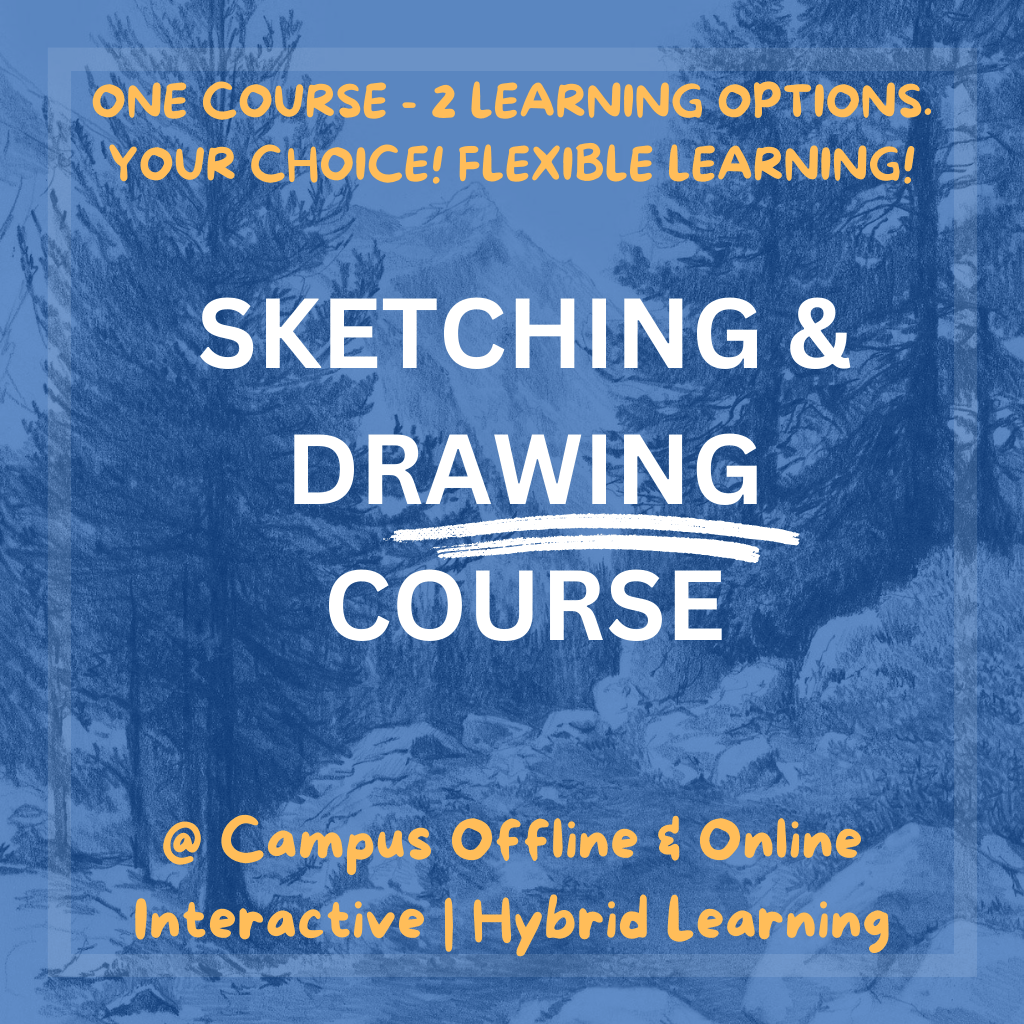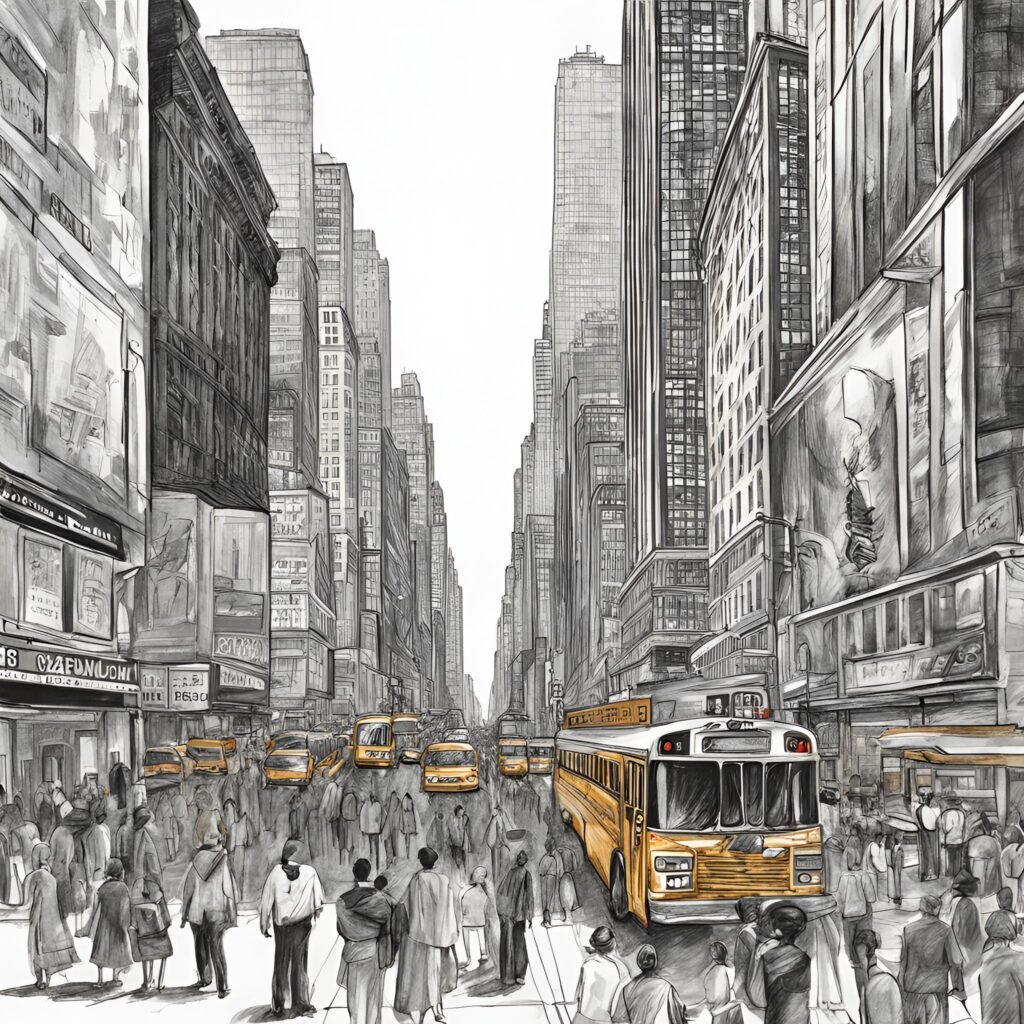Offline @ Campus — Bengaluru Students
Fees include materials.
24 sessions (45 minutes each. 2 Sessions in a day)— Flexible Timings (Weekday | Weekend)
Skip to content
Two Learning Options:
1. @ Bangalore Campus
2. Online Live Interactive


15,000+ Students
Trained Worldwide
Structured Courses
for All Levels
Expert Mentors
Global Exposure

The Sketching and Drawing Course offers a comprehensive journey into the world of visual art, perfect for beginners and intermediate artists alike. Over a series of carefully structured lessons, participants will explore fundamental techniques such as line drawing, shading, hatching, and stippling. The course also delves into more advanced concepts like light and shadow, perspective, and composition, guiding students through various styles and subjects. With hands-on practice and expert guidance, students will develop the skills needed to create detailed, expressive sketches and drawings.
Fees include materials.
24 sessions (45 minutes each. 2 Sessions in a day)— Flexible Timings (Weekday | Weekend)
24 Sessions (45 minutes each. 2 Sessions in a day)(Weekday | Weekend)
Live online classes & Free Video Tutorials worth Rs. 999.
24 Sessions (45 minutes each. 2 Sessions in a day)(Weekday | Weekend)
Global timings & Free Video Tutorials worth $12 — join from anywhere.
Unlock your passion for art and inspire the next generation of artists with our Sketching and Drawing Course! Gain expert knowledge, hands-on experience, and creative teaching techniques to build a fulfilling career in art education. Whether you’re a seasoned artist or a newcomer, this course equips you with the skills to lead vibrant, engaging art classes. Start your journey to becoming a Certified Sketching Artist today!
Choose the learning path that suits you best! Opt for Classroom Classes for hands-on, face-to-face learning, Online Interactive sessions for real-time engagement from anywhere, or eLearning for a flexible mix of video tutorials and live classes. The choice is yours to create your perfect art journey!
A: The course duration is typically three months. The student has the flexibility to complete the course faster if they take more classes. Check with the programme office for the schedule and availability of slots.
There are no specific prerequisites. The course is open to beginners as well as those with some experience in painting.
Interested candidates need to fill out an online application form and submit it along and pay the fees. If you want to talk to the Programme Office, kindly call: +91 9902739994 (9.30 am to 6.00 pm)
Please refer above for Special Offer Fees! Limited Period Offer
Yes. You can. Students from any part of the world can take these courses. Qualified Art Teachers from India currently handle the courses.
We have students from 18+ countries worldwide. Kindly check the timing and schedule with the Programme Office: +91 9902739994
The Sketching and Drawing course covers fundamental techniques in pencil sketching, shading, and perspective, as well as drawing from observation and imagination. It also explores various styles, mediums, and the principles of composition and anatomy.
No. Students should bring their supplies as well. A list of recommended materials will be provided upon enrollment.
Yes, students will be given assignments to practice techniques learned in class. These are crucial for skill development.
Yes, students will receive free Study Material on certain topics of Fundamentals of Sketching and Drawing. These lessons cover basic techniques in line drawing, shading, perspective, and more.
The free lessons will be available online through our learning portal. Students will receive login details upon enrollment.
Yes. The same course is available in Live Online Interactive mode
This certificate can help you enhance your portfolio, prepare for advanced art studies, or pursue a hobby more seriously. It can also lead to opportunities in freelance Drawings, gallery exhibitions, commissioned work, and art instruction.
Yes. You can do more advanced sketching as much you want. Please contact the Programme Office (+91 9902739994) for the same
Currently, we are offering a hefty discount for this course. Please refer to pricing
You can reach the admissions office via email at konsultcreative@gmail.com or call us at +91 9902739994. Our office hours are Monday to Saturday, 9 AM to 6 PM.
We offer three learning options:
Yes, you can switch between learning modes if needed, based on availability and scheduling.
The eLearning option offers a blend of pre-recorded video tutorials and scheduled live classes. You can learn at your own pace through the video lessons, and join live classes for real-time feedback, guidance, and interaction with instructors.
Yes, the video tutorials are available 24/7, allowing you to access them anytime that suits your schedule. You can revisit lessons as often as you like during the course duration.
No special software is required. The course is accessible through a standard web browser. You will, however, need a stable internet connection and access to Google Meet for live classes.
Absolutely! The eLearning option is designed to cater to all skill levels, and beginners can benefit from both the structured video lessons and the support of live classes for personalized guidance.

The Sketching and Drawing Course by Konsult is meant to give beginners a strong foundation in Visual Art. Students are introduced to the basics of sketching and drawing and move up to advanced techniques aided by practical work.

We are very happy to be part of the Konsult Art & Design Academy family. We moved back from the US 1.5 years back and my son, Aniketh has been a student here since then. The teachers are proficiently skilled in art and they also have a very good philosophy of teaching here. They nurture the child’s interest in art and help the child’s talent blossom. Aniketh loves to go to his art class.

Our daughter is going for the oil painting course at Konsult for last one year and it has been an amazing experience so far. We’ve seen her improving day by day with great mentors at the academy. We would love to be associated with Konsult which provides such a great platform for art.

I did visual art course in Konsult art academy and enjoyed every bit of it. The faculty members are really good! I thank Shahina ma’am, Vijetha, Amit, Ankitha and the management for their support.

Excellent academy. Friendly teachers.
Good environment to slow down and spend time to learn arts in this fast paced world







Contents